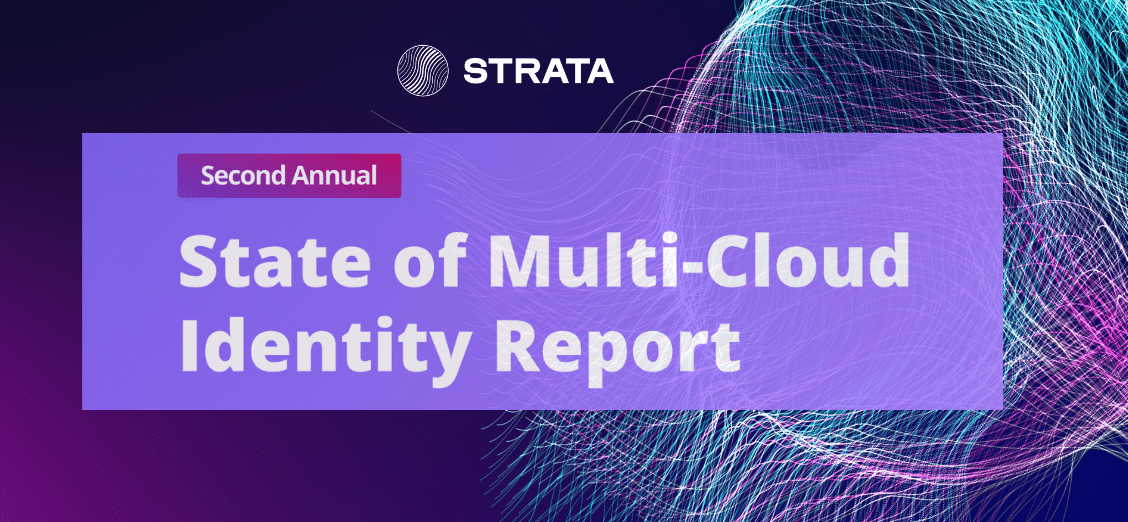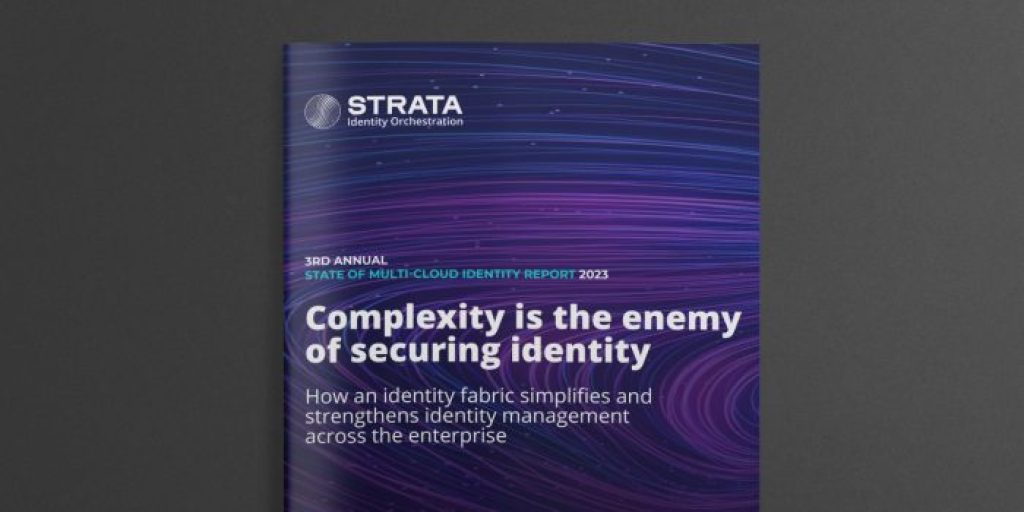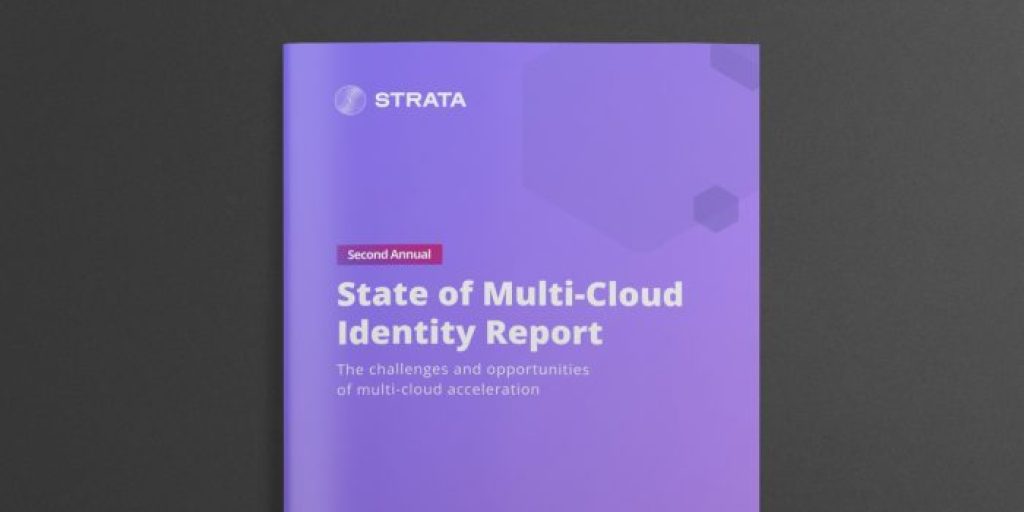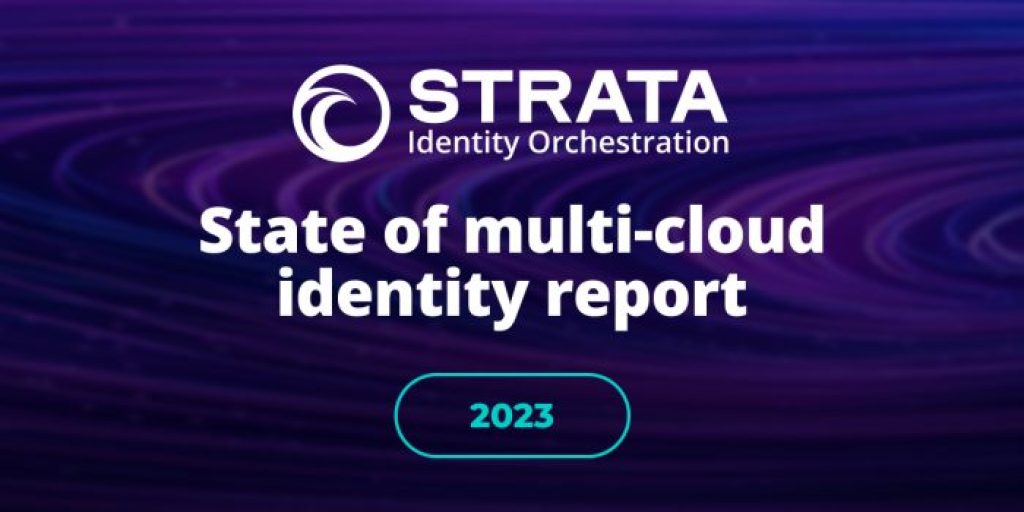Strata’s State of Multi-Cloud Identity report reveals 2022’s top IAM challenges for enterprises

With a cloud-first approach gaining momentum, a growing number of applications are being hosted across multiple cloud platforms (AWS, Azure, GCP, etc.). At the same time, many apps are still protected by a legacy identity system (such as SiteMinder, Oracle, etc.) and only a small number of enterprises plan to move off on-premises systems entirely — which means a combination of hybrid and multi-cloud for the foreseeable future.
Since each cloud and on-premises system has its own built-in identity system, multi-cloud and hybrid cloud environments create a tangled web of siloed identities that put organizations at risk. And further away from the goal of reaching Zero Trust.
Strata’s latest report on the State of Multi-cloud Identity reveals 2022’s top IAM challenges for enterprises and opportunities for multi-cloud acceleration. Conducted by Osterman Research on behalf of Strata, the report provides new data on the growing trends and increasing difficulties that enterprise organizations are facing as they move to the cloud and try to manage identity in multiple clouds. It also points to the solutions that offer the most promise.
Here are some of the data points from the report that reveal the top challenges in multi-cloud identity today for enterprises.
2023 State of Multi-Cloud Identity Report
Top data points from Strata’s 2022 Multi-Cloud Identity Report
Multi-cloud adoption has exploded. As multi-cloud strategies become ingrained, a growing number of identities are being scattered across silos. As a result, it’s becoming more difficult to secure distributed identities with modern authentication approaches. For example:
- Nearly all enterprises have moved to cloud services, and 84% use more than one cloud.
- 15% of enterprises currently use four or more clouds. In 12 months, almost 40% expect to do so.
- 82% of enterprises with $1B+ in revenue currently use three or more clouds, up from 66% last year.
- Half of enterprises currently host over 60% of their apps in the cloud, and within 12 months, that number could be as high as 80% of enterprises.
- Only 20% of organizations think they will be able to move away from on-premises applications entirely.
The State of Multi-Cloud Identity Report reveals more data and sheds light on the implications for enterprise companies moving to multi-cloud in 2022.
Legacy tech debt and outdated IAM practices are big problems for multi-cloud
A user’s identity is the foundation of providing secure access to your company’s data and applications. If you’re like many enterprises, you’re already struggling to figure out how to ensure consistent user identities as you move more and more of your applications to the cloud. The hindrances to multi-cloud identity are real and significant.
Findings include:
- Identities are more scattered than ever. Enterprises are managing employee identities across a scattered collection of identity systems.
- 70% of enterprises use two or more identity systems.
- A glaring lack of effective capabilities makes it difficult to migrate to the cloud or adopt cloud services.
Current identity and access management standards only partially solve the challenges with multi-cloud identity. Enterprises indicate that their full requirements are unsupported by these standards because they were not built to support the specific needs of multi-cloud identity.
Modernizing identity for multi-cloud is a high priority
The adoption of multi-cloud has emphasized the challenges with current identity and access management approaches. The 2022 State of Multi-Cloud Identity report shows how enterprises are modernizing identity for their growing multi-cloud environment.
Key highlights:
- Once an enterprise adopts multi-cloud strategies, consistency of identity and access policies becomes a core mandate.
- Only one in five enterprises have already secured 80% or more of their app landscape with MFA.
- Data classification and consistent identity and access policies are high-priority initiatives for Zero Trust.
The full Strata report provides deeper analysis, including the priority of adopting a Zero Trust architecture.
Identity Orchestration helps achieve Zero Trust
Enterprises are acknowledging the consequences of having siloed identities as a result of using multiple clouds — even while they accelerate their adoption of multi-cloud identities.
To cope with these identity obstacles, enterprises are hiring identity architects and engineers to manually create and maintain consistent identities and access policies across multi-cloud deployments. This approach comes with high costs, both in the short term (labor costs) and in the long term (opportunity costs).
Strata’s report reveals that enterprises place a high value on a set of multi-cloud outcomes:
- Future-proofing identity architectures.
- Removing dependencies between apps and specific identity providers.
- Enforcing consistent runtime access policies for apps across multiple clouds.
Each of these outcomes offers important strategic value to enterprises, but the resource-heaviness of current solutions places those outcomes at risk. Identity Orchestration may provide a better approach to today’s multi-cloud identity challenges.
2022’s top IAM challenges for enterprises
Current identity standards and technologies for multi-cloud policy management are failing to live up to the actual demands of multi-cloud. Enterprises are left with few options, besides hiring expensive identity architects to fill the gap. Strata’s latest report on multi-cloud identity management sheds light on the situation and offers alternative solutions that could be appealing to enterprise companies.
What you’ll learn from this report:
- The top identity challenges facing organizations using multiple cloud platforms
- The costs of today’s approaches to identity and access management
- Insights to guide your organization’s business decision-making processes and strategies
Get all the data and insights of 2022’s top IAM challenges in the full report:



